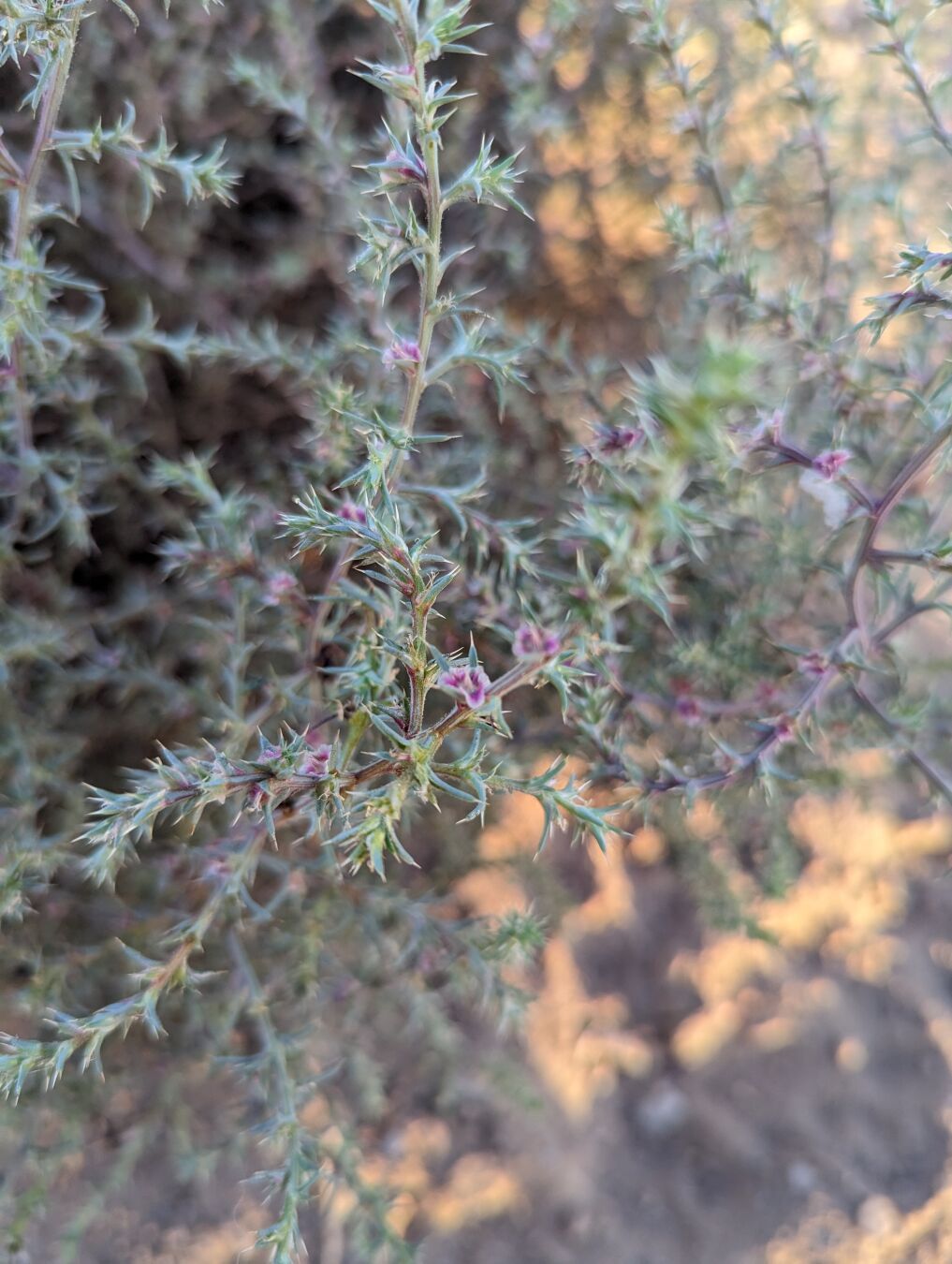Hello, everyone!
I’m going to start profile common invasive species to the central valley to help people recognize them, know which are good, bad, and ugly, and distinguish them from true natives. I’m starting with a special guest the central valley drivers will soon be getting re-acquainted with: the Tumbleweed (Salsola sp.). The tumbleweed, also known as Russian Thistle, was first introduced by Russian immigrants to the Dakotas in the late 1800s. The plant spread aggressively, and was in California before the turn of the century.
In terms of physical characteristics, Salsolas tend to have a darker, olive green appearance, with the larger stalks taking on purple-hued streaks later in the season. The leaves are sort of clusters of feathery spines (with some not so feathery spines mixed in for good measure). Later in their growth season, they have small, purple-hued flower like structures (though I don’t think they’re true flowers) at the nodes. They have an erect habit that forms a small, oblong sphere of a bush, about two to three foot high (there’s a lot of variety there, but I’d say that about two foot is average) and a little wider than it is tall by the end of the growing season.
Salsolas are hardy plants that thrive in disturbed souls and hot, dry conditions. In fact, they have a root structure that’s designed to release the stalk of the plant and let it tumble once it comes into contact with water, which is why you generally start seeing them jump out in front of traffic around the time of the first rains. Salsolas are safe to eat in small quantities, and I have some personal experience with this. You really only want the new growth from very young plants, anything else is going to be tough as boots and half as appetizing (nevermind the spines). Young plants have smaller, softer spines and the new growth tastes of spinach when boiled (which is how I prepare it, I never eat it raw. As I recall, it has some quantity of oxalic acid in it that will wreck your kidneys with enough exposure, boiling removes the oxalic acid). I’m not personally fond of foraging Salsolas because their preference for disturbed soils generally means a high likelihood that they’ve been exposed to some pretty nasty stuff, and they’re really only acceptable for cooking while the plants are less than a month old.
So, how bad are tumbleweeds?
Well, as far as I can tell, in the way of invasive plants, you can do a whole lot worse than tumbleweeds. According to the California Invasive Plant Council, Salsolas actually seem to help native grasses by stabilizing disturbed soil and introducing phosphorus. They’re not very competitive, and rarely dominate anywhere long term. In fact, they note that Salsolas tend to be the first thing that will grow in disturbed soil, and are usually followed and eventually squeezed out by other plants and grasses that benefit off the shelter, phosphorus, and stabilized soil that the Salsola provides. Additionally, native animal species (in particular small lizards and reptiles) have been observed to use the Salsola for both shelter and hunting grounds. Salsolas don’t have a significant impact on ecology in terms of fire risk or water patterns, either. Probably the worst thing about them is that they can be kind of a pain in the butt for humans when they swarm streets or highways or pile up on fences.
I’m considering planting some Salsolas in my back yard to try and stabilize the loose soil this winter, and I’ll cut them back once other plants start to take over.

